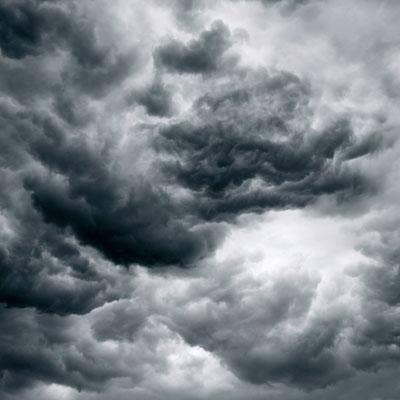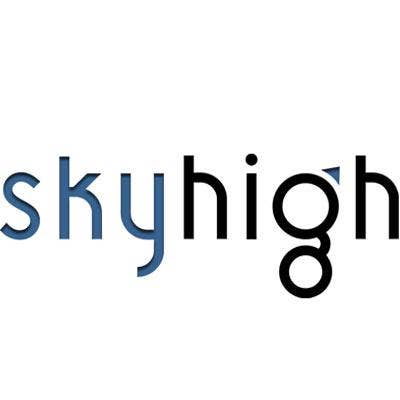10 Things You Need To Know About The McAfee-Skyhigh Networks Cloud Security Megadeal

Securing The Cloud
McAfee made a major foray into the cloud this week with its proposed acquisition of industry-leading cloud access security broker Skyhigh Networks.
McAfee Chief Technology Officer Steve Grobman spoke with CRN about what makes Skyhigh unique in the industry, the most immediate opportunities for technical synergies, and how customers and partners of both companies will benefit from the deal.
Grobman also detailed the openings the acquisition will create around data science, threat defense, and data loss and prevention, as well as why McAfee decided to buy its way into cloud security rather than building or partnering.
Read on to learn how McAfee and Skyhigh plan to go about securing traditional and cloud endpoints.

10. Technological Changes Make Deep Packet Inspection Less Useful Than Before
A lot of advanced security objectives traditionally were achieved by performing a deep inspection of the packets moving through the network perimeter, Grobman said. But the perimeter has started to disappear as end customers increasingly utilize cloud or devices outside their environment, according to Grobman.
As the perimeter disappears, Grobman said critical business functions are increasingly taking place in the public cloud, on mobile devices, or on machines not connected to the corporate network.
Grobman also said the increased use of encryption at all levels of the stack has made it next to impossible for legitimate security actors to inspect network protocol traffic and assess whether or not it's a bad actor. All told, Grobman said businesses are limited in the amount of the data they can get from the network alone.

9. The Deal Will Support An Architecture That Addresses Traditional And Cloud Threats
Part of the beauty of McAfee's strategy following the Skyhigh Networks deal, Grobman said, is that network traffic can now get decrypted in two places.
Combining McAfee's traditional endpoint capabilities with Skyhigh's world-leading cloud security platform will result in a comprehensive set of defensive capabilities for end customers, according to Grobman.
Placing strategic control points on the endpoint and the cloud will result in the highest level of security control, Grobman said, and provide critical event information to the combined company's data science platform.

8. Endpoint And Cloud Expertise Are Needed To Succeed In A Hybrid World
The combined McAfee-Skyhigh offering will provide the best architecture for organizations anchoring in the hybrid cloud, which Grobman said includes the vast majority of the Global 2000.
Traditional compute environments will need to persist for certain workloads, Grobman said, while cloud brings tremendous value from an agility perspective, the speed of technology development and the deployment of business applications.
Some customer overlap exists between McAfee and Skyhigh, according to Grobman. Once the acquisition closes and the product integration functionality is implemented, Grobman said these joint customers will have their cloud access security broker and traditional security capabilities work together seamlessly.

7. Skyhigh Will Be The Focal Point Of McAfee's New Cloud Business Unit
McAfee will establish a cloud business unit consisting mostly of the traditional Skyhigh product line to ensure that their customers and partners receive a high level of support as the companies work through the product and technical integration, according to Grobman.
Skyhigh's entire executive team is expected to move over to McAfee when the acquisition closes, slated for the beginning of 2018, Grobman said, with Skyhigh CEO Rajiv Gupta being tapped to run McAfee's new cloud business unit.
Although there is some element of cost synergies in every deal, Grobman said the technical synergies and the value of the assets that Skyhigh is bringing to the table are the main reasons McAfee decided to pursue the acquisition.

6. The Company's Post-Acquisition Channel Structure Is Still Being Evaluated
McAfee and Skyhigh today have their own respective partner programs, with more than 90 percent of McAfee's business and between 65 percent and 70 percent of Skyhigh's business going through the channel. The company is looking into what its options are going forward, Grobman said, and plans to evaluate the combined entity's channel structure as part of the integration plans.
As a result of the deal, Grobman said McAfee partners will have access to world-class technology that's all about the future of how organizations secure their computing environments. Skyhigh partners, meanwhile, will enjoy better access to traditional technology that will help them achieve a higher level of fidelity around how most organizations actually operate, according to Grobman.
Virtually no organizations are 100 percent in the cloud, Grobman said, and the acquisition will make it possible for both sets of channel partners to take advantage of technology that's aligned to a hybrid model.

5. Prior To The Deal, McAfee Hadn't Focused on Skyhigh's Areas of Expertise
McAfee's cloud initiatives prior to the Skyhigh acquisition were focused around retooling traditional technology to make cloud a first-class citizen, Grobman said, and includes offering such as a SaaS-based web gateway and file encryption for cloud services.
The company, though, hadn't been focused on Skyhigh's core cloud security capabilities such as monitoring and managing Shadow IT, establishing controls for sanctioned SaaS, and managing, defending and mitigating concerns around public cloud, according to Grobman.
Mistakes in the utilization of public cloud resources have been behind a number of data breaches, Grobman said, since without appropriate access controls in place, data in the public cloud can be read and stolen by adversaries.

4. Skyhigh's Offering Is More Comprehensive Than Virtually All Of Its Peers
A number of companies have individual cloud security components, but Grobman said Skyhigh is one of the only vendors with a comprehensive set of cloud security capabilities that are world-class in nature.
McAfee looked at various ways to get deeper into cloud security – including building and partnering – but ultimately determine that an inorganic acquisition would be the fastest path to getting its customers a high-quality offering in the space, Grobman said.
The Skyhigh deal had been in the works for quite some time, Grobman said, and engaged in a due diligence process to really understand all aspects of the company.

3. The Combined Company Will Extend Data Loss Prevention Into The Cloud
A variety of opportunities exist to extend the technology McAfee applies to traditional environments today to also work in the cloud, Grobman said.
For instance, Grobman said that McAfee has strong data loss prevention capabilities forthe endpoint and the network. Extending those traditional DLP capabilities into a comprehensive set of cloud DLP offerings would be a very straightforward process, according to Grobman.

2. The Deal Will Allow The Company To Step Up Its Threat Defense Efforts
McAfee also plans to bring its advanced technology around threat defense and control to Skyhigh's cloud intersection points, Grobman said.
This technology is focused on examining behavioral data and examining how individuals are using traditional and cloud systems to determine if any breach attempts are under way, according to Grobman. These efforts should create a better and more comprehensive picture of what's happening inside an organization, Grobman said.
For instance, if the same user attempts to log in in two different physical geographies, Grobman said it's a clear indication that a potential breach is afoot. Whether the login attempts take place on premise or in the cloud is immaterial to the nature of the threat, Grobman said.

1. The Deal Means The Company Will Be Able To Take Their Data Science To The Next Level
Both McAfee and Skyhigh share a commitment to using data science and analytics to identify next-generation threats, Grobman said.
Data is brought into an environment where it can interact with a security operations center (SOC), Grobman said, with McAfee and Skyhigh then using artificial intelligence and machine learning to analyze things like abnormal behavior or potential threat scenarios that exist in an environment.
Bringing McAfee and Skyhigh's data science and artificial intelligence platforms together will result in a confluence of data, Grobman said, ultimately enabling customers to be more effective in detecting a wide range of threats inside their organizations.